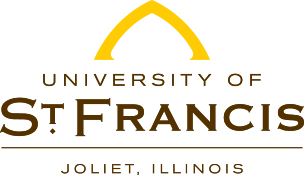The Physician Assistant Program embraces USF’s Franciscan mission and values of respect, compassion, service and integrity.
The University of St. Francis offers its master of science in Physician Assistant Studies program in “the Land of Enchantment”—the state of New Mexico—in Albuquerque, which offers a rich diversity of cultures, exciting outdoor activities, cultural attractions and a magical landscape.
The Physician Assistant program at USF’s Albuquerque Campus is a full-time, 27-month program. The program consists of 15 months of didactic classroom basic medical sciences, behavioral and social sciences, clinical preparatory sciences and professional practice issues. This is followed by 12 continuous months of supervised clinical learning experiences, at sites within New Mexico and around the U.S. Students must complete the entire 27-month program through the University of St. Francis. Upon successful completion of the entire program of study, the student will be awarded a master of science (M.S.) degree.
The mission of the USF P.A. program is to educate highly qualified Physician Assistants preparing them to become competent, compassionate and comprehensive health care providers for practice in primary care fields. Our vision is that our USF P.A. graduates will be leaders in the health care community, continuously striving for excellence in their professional endeavors.
Program Goals
Guided by our vision and values, we achieve our mission by…
1. Selecting highly qualified candidates for admission to the program. We achieve this goal by capturing CASPA data and through the interactive interviewing process.
Cumulative GPA: 3.62
Pre-req GPA: 3.61
Sci GPA: 3.53
Average HCE (hours): 3077
NM Res: 11/37
Cumulative GPA: 3.57
Pre-req GPA: 3.60
Sci GPA: 3.51
Average HCE (hours): 3400
NM Res: 9/34
Cumulative GPA: 3.54
Pre-req GPA: 3.50
Sci GPA: 3.4
Average HCE (hours): 2775
NM Res: 13/40
Cumulative GPA: 3.56
Pre-req GPA: 3.54
Sci GPA: 3.46
Average HCE (hours): 1924
NM Res: 9/33
Cumulative GPA: 3.49
Pre-req GPA: 3.41
Sci GPA: 3.37
Average HCE (hours): 1200
NM Res: 8/34
2. Providing a comprehensive medical education that enables students to become competent healthcare providers. We achieve this goal by the following…
A) We provide a comprehensive medical education that includes 15 months of didactic classroom experience covering basic medical sciences, behavioral and social sciences, clinical preparatory sciences and professional practice issues. This is followed by 12 continuous months of supervised clinical learning experiences.
B) Maintaining a first-time PANCE pass rate which is equivalent or better than the national average.
- Class of 2018 – PANCE First-Time Pass Rate 88% | National Average: TBD%
- Class of 2017 – PANCE First-Time Pass Rate 97% | National Average: 97%
- Class of 2016 – PANCE First-Time Pass Rate: 100% | National Average: 96%
- Class of 2015 – PANCE First-Time Pass Rate: 100% | National Average: 96%
- Class of 2014 – PANCE First-Time Pass Rate: 97% | National Average: 95%
C) Maintaining a high graduation rate per cohort, while minimizing our attrition rate.
- Class of 2018 – Graduation rate: 94%, 32/34 | Attrition rate: 6%, 2/34
- Class of 2017 – Graduation rate: 97%, 31/32 | Attrition rate: 3%, 1/32
- Class of 2016 – Graduation rate: 79%, 27/34 | Attrition rate: 21%, 7/34
- Class of 2015 – Graduation rate: 91%, 31/34 | Attrition rate: 9%, 3/34
- Class of 2014 – Graduation rate: 94%, 32/34 | Attrition rate: 6%, 2/34
3. Preparing students to serve diverse populations in a variety of clinical setting. We achieve this goal by the following…
- Our clinical rotation experiences may take the student from rural communities to large cities, private clinic practices to inpatient hospitals.
- A curriculum which emphasizes primary care.
- The curriculum includes courses such as PAMS 612 Epidemiology and Public Health which addresses community wide goals of public health..
- A community service requirement during the didactic phase with a reflection paper for each. Representative examples of the student community service projects include a school supply drive for children of the To’Hajiilee Navajo reservation village, food drives and volunteering at Roadrunner Food Bank, a teddy bear drive for the local children’s hospital, nursing home visits, a Thanksgiving food drive for needy families, “Adopt a Soldier” care packages, blood drives, influenza immunization clinic, and care packages for homeless Albuquerque residents.
4. Instilling the value of lifelong learning and promoting leadership roles in the profession and community. We achieve this goal by the following…
- A curriculum that includes a sequence of courses addressing current medical literature and research. This includes: PAMS 696 Research Foundations, PAMS 697 Study of Medical Literature, PAMS 698 Research Independent Study, and PAMS 799 Capstone Research Project.
- Student oral and poster presentations of their master’s project at Capstone Day.
- Student and faculty attendance at national and state conferences; weekly journal club
- Student representatives to NMAPA, SAAPA, HOD.
- Faculty involvement: NMAPA Region V Board Member, NMAPA President, NMAPA Legislative Committee, New Mexico Medical Board Task Force, New Mexico Medical Commission panel, AAPA HOD for State of New Mexico, NMAPA CME committee.


